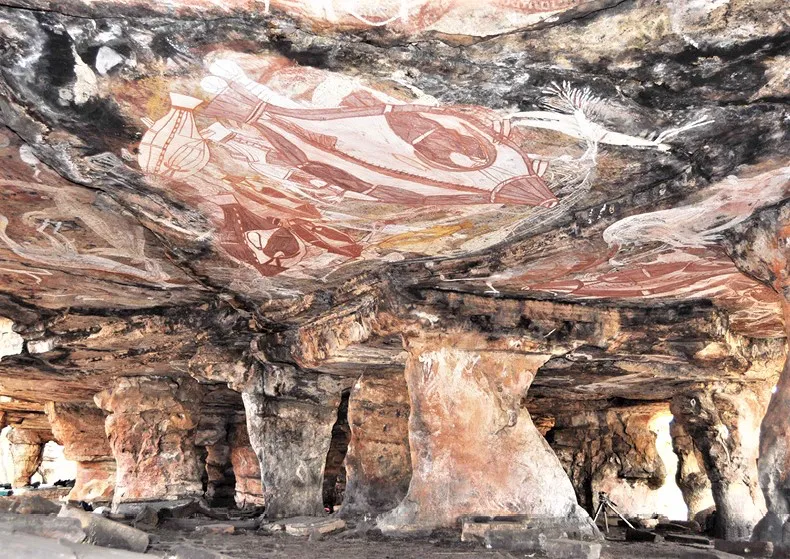Gabarnmung: An Archaeological Marvel
Gabarnmung, located in the Northern Territory of Australia, stands as a significant archaeological and cultural site. This rock shelter, discovered in 2006, offers invaluable insights into ancient Aboriginal life. Researchers have dated the site to around 35,000 BC, making it one of the oldest known human habitation sites in Australia.
Get your dose of History via Email
Discovery and Excavation
In 2006, a team of archaeologists led by Bruno David discovered Gabarnmung. The site lies within the Arnhem Land plateau, a region rich in Aboriginal history. Initial excavations revealed a complex structure with rock art and stone tools. These findings prompted further investigation.
Structural Features
Gabarnmung features a unique rock shelter with a ceiling supported by natural stone pillars. The shelter measures approximately 19 meters by 19 meters. The ceiling height varies from 1.75 meters to 2.45 meters. Researchers believe that ancient inhabitants modified the shelter to create a more habitable space.
Rock Art
The rock art at Gabarnmung is among the most significant discoveries. The art includes depictions of animals, human figures, and geometric patterns. Radiocarbon dating of charcoal found in the art suggests that some paintings date back to 28,000 BC. This makes Gabarnmung one of the oldest rock art sites in the world.
Stone Tools and Artifacts
Excavations at Gabarnmung have uncovered numerous stone tools and artifacts. These include grinding stones, spear points, and cutting tools. The tools provide evidence of a sophisticated tool-making culture. Researchers have also found ochre, used for both art and ceremonial purposes.
Cultural Significance
Gabarnmung holds immense cultural significance for the Jawoyn people, the traditional custodians of the land. The site serves as a testament to their long-standing connection to the land. The Jawoyn people continue to play a crucial role in the preservation and management of Gabarnmung.
Preservation Efforts
Preserving Gabarnmung poses several challenges. The site is vulnerable to natural erosion and human interference. Collaborative efforts between archaeologists and the Jawoyn people aim to protect and conserve the site. These efforts include controlled access and ongoing research.
Conclusion
Gabarnmung offers a rare glimpse into ancient Aboriginal life and culture. Its rock art, stone tools, and structural features provide valuable information about early human habitation in Australia. Ongoing research and preservation efforts will ensure that Gabarnmung remains a vital link to our shared human history.
Sources:

